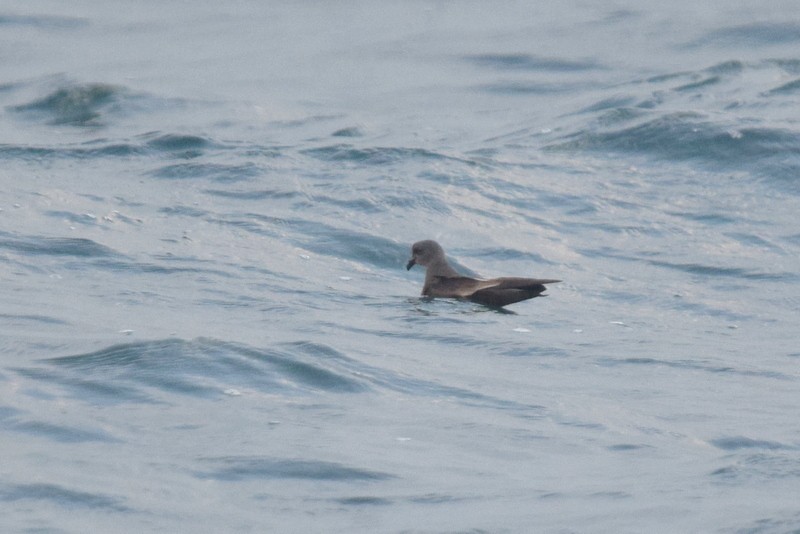Swinhoe's Storm-petrel
A species of Dark Storm Petrels Scientific name : Hydrobates monorhis Genus : Dark Storm Petrels
Swinhoe's Storm-petrel, A species of Dark Storm Petrels
Botanical name: Hydrobates monorhis
Genus: Dark Storm Petrels
Content
Description General Info
 Photo By kokhuitan , used under CC-BY-NC-4.0 /Cropped and compressed from original
Photo By kokhuitan , used under CC-BY-NC-4.0 /Cropped and compressed from original Description
Swinhoe's storm petrel is a small bird, 18–21 cm in length with a 45–48 cm wingspan, though distinctly larger than the European storm petrel. It is essentially dark brown in all plumages, and has a fluttering flight, pattering on the water surface as it picks planktonic food items from the ocean surface. Unlike the European storm petrel, it does not follow ships. In structure it most resembles a Leach's storm petrel with its forked tail, longish wings, and flight behaviour, but does not have a white rump and the call differs. It is difficult to distinguish from other all-dark Oceanodroma species, and the first English record had to be DNA-tested to eliminate the possibility that it was a Leach's storm petrel, since populations of north-eastern Pacific Leach's storm petrels contain individuals that show completely dark rumps. 
Size
20 cm
Nest Placement
Cliff
Feeding Habits
Swinhoe's Storm-petrel feeds primarily on planktonic crustaceans and small fish. It forages by pattering across the water's surface and dipping into the sea to capture prey, often feeding at night. Swinhoe's Storm-petrel has adapted to locate bioluminescent food sources, a unique preference among seabirds.
Habitat
Marine, pelagic, coastal waters, small offshore islands, evergreen forest
Dite type
Piscivorous
General Info
Feeding Habits
Bird food type
Distribution Area
It breeds on islands in the northwest Pacific off the Russian Far East, China, Japan and Korea. It nests in colonies close to the sea in rock crevices and lays a single white egg. It spends the rest of the year at sea, ranging into the Indian Ocean and Arabian Sea. It breeds on Verkhovsky Island (7,500 pairs), south of Vladivostok, Russia, and Japan (a minimum of 1,000 pairs). There are little-known populations in China, Taiwan, North Korea and South Korea, and records suggest that breeding may also occur in the North Atlantic. In winter, it migrates south and west to the northern Indian Ocean (Brooke 2004). Sato et al. (2010) also estimate the world population at a minimum of 130,000 pairs, confirming that the species has a very large population. However, Birds Korea (2010) state that c. 100,000 pairs nest on Gugeul Islet, implying that possibly over 75% of the global population breed on one very small island. The species nests at six or seven breeding islets in South Korea (Chang-Yong Choi in litt. 2012). There is apparently anecdotal evidence that some colonies are in decline (N. Moores in litt. 2011). 
Scientific Classification
Phylum
Chordates Class
Birds Order
Albatrosses and Petrels Family
Hydrobatidae Genus
Dark Storm Petrels Species
Swinhoe's Storm-petrel